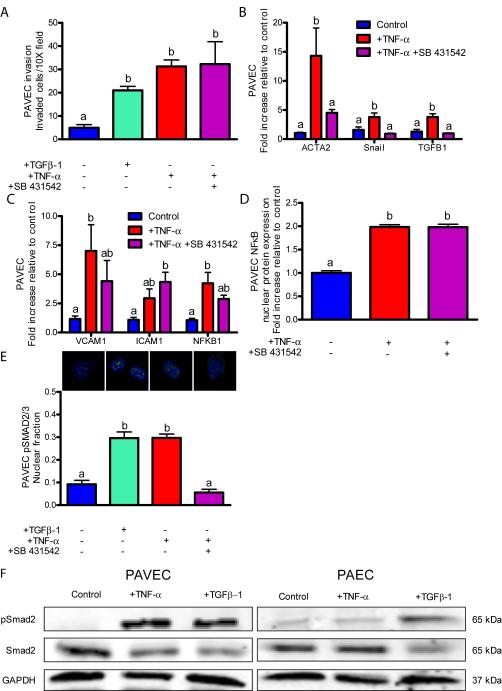Figure 6.
Adult cells do not require TGFβ in inflammatory-EndMT signaling. A.) Cell invasion after a 48 hour exposure to 100 ng/mL TGFβ-1, 100 ng/mL TNF-α or 100 ng/mL TNF-α with 10 μm SB 431542 ALK5 inhibitor. B.) EndMT-related gene expression after a 48 hour exposure to 100 ng/mL TNF-α with inhibitors. C.) Inflammatory activation-related genes after a 48 hour exposure to 100 ng/mL TNF-α with inhibitors. D.) PAVEC NFκB nuclear localization quantification after a 48 hour exposure to 100 ng/mL TNF-α with inhibitors. E.) pSMAD2/3 nuclear localization following a 48 hour exposure to 1 ng/mL TGFβ-1, 100 ng/mL TNF-α, or 100 ng/mL TNF-α with 10 μm SB 431542 ALK5 inhibitor. Staining shows pSMAD2/3 (green) or DNA (blue). F.) Western blots for PAVEC or porcine aortic valve endothelial cells (PAEC) exposed to 100 ng/mL TNF-α or TGFβ-1 for 48 hours. Error bars show ±SEM, n ≥ 3 culture wells with monolayers. Bars that do not share any letters are significantly different according to a one-way ANOVA with Tukey’s post test (p ≤ 0.05).

